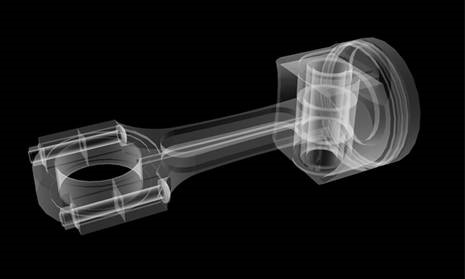NDT for Castings: A definitive guide
NDT stands for Non-Destructive Testing. It refers to an array of inspection methods that allow inspectors to evaluate and collect data about a material, system, or component without permanently altering it. NDT may also be called: NDE (Non-destructive Examination or evaluation)
What are Castings?
Casting is a process where liquid materials are typically put in a mold to solidify, the resulting component removed and also called a casting. Like any manufacturing process, casting is vulnerable to defects or undesired flaws in parts being made.
Castings are obtained by the process of pouring molten metal into a die or mold. The poured molten metal may be of any base metal such as cast iron, steel with a mixture of alloying elements, aluminium, bronze, Copper or a mixture of base metals.

What are Casting defects and their causes?
The following are the casting defects and their causes:
Cold Shut – is caused when molten metal is poured over solidified metal
Hot Tear – occurs when there is unequal shrinkage between light and heavy sections
Shrinkage Cavities – usually caused by lack of enough molten metal to fill the space created by shrinkage, similar to the pipe in the ingot
Micro Shrinkage – usually many small subsurface holes that appear at the gate of the casting, it can also occur when metal must flow from a thin section into a thicker section of a casting
Blow Holes – small holes at the surface of the casting caused by gas that comes from the mold itself
Porosity – is caused by entrapped gas, porosity is usually subsurface but can occur on the surface depending on the design of the mold.
NDT methods for Castings
The suitable NDT techniques for the type of defects are given below. For basic understanding only general NDT methods are discussed in this blog;
Surface Defects – Visual Test VT + Liquid Penetrant Test PT / Magnetic Particle Testing MT with alternating current
Sub-surface Defects – Magnetic Particle Testing MT with Direct current / Radiography RT
Internal Defects – Ultrasonic Testing UT / Radiography RT
Note1: Ultrasonic Testing by conventional methods will not detect Surface and subsurface discontinuities.
Note 2: If the metal is not having magnetic permeability then MT is replaced by Eddy Current Testing.
Inspection & Testing of Castings:
The inspection and testing of Castings can be grouped into five categories:
● Casting finish: Casting finishing is the process of taking cooled, molded cast assemblies and preparing them for use. Depending on the process used, (no-bake, green sand, investment, etc.) the castings will require various levels of finishing. The type of metal cast also plays a part in the finishing process.
●Dimensional accuracy: Dimensional accuracy refers to how well a printed object matches the size and specifications of the original file. For accurate parts, choose the printing process and materials that are most appropriate for the design.
●Mechanical testing: Hardness testing is the most commonly used procedure for mechanical property evaluation. It quickly provides a numerical value and is usually non-destructive.
● Chemical composition: The performance properties of an alloy are determined to a significant degree by the chemical composition of the alloy, with minor alloying elements often having a significant effect. This has led to the practice of specifying casting alloys by using ASTM, Society of Automotive Engineers (SAE) and AMS alloy specifications.
●Casting soundness: Measure of impurities and/or discontinuities such as sand inclusions, slag inclusions, macroporosity (pores greater than 50 nm in diameter) and shrinkage.
Conclusion:
With so many different testing methods at our disposal, it might get overwhelming to select the best one. However, we at One Stop NDT are here to help for any support in identifying the technology for particular application. Also, you can choose the perfect testing method after studying which one suits your needs best.
The main objective of One Stop NDT is to create awareness to the NDT Market (Equipment Manufacturers, service providers, distributors, plant operators, and NDT professionals) about the development in the industry and new products & services’ availability in the global market and to provide them with direct access to interact and explore on the possibilities of helping and working together.









